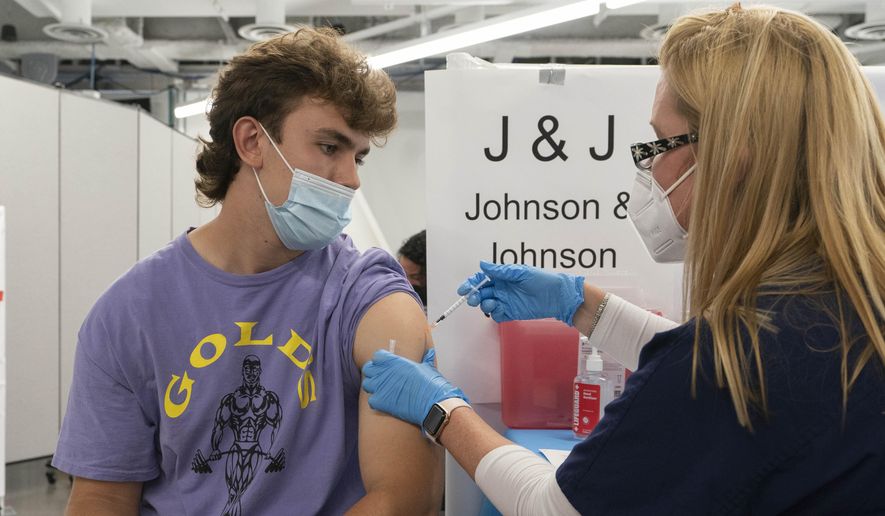Recipients of the Johnson & Johnson COVID-19 vaccine were more likely to experience a rare blood clotting issue than persons in the general population before the pandemic, according to a study published Monday by JAMA Internal Medicine.
Mayo Clinic researchers gathered data on rates of the clotting disorder in Olmsted County, Minnesota, from 2001 to 2015 and compared it to rates of the issue among the population that received the one-shot J&J vaccine.
It found persons in the latter group were 3.5 more likely to develop cerebral venous sinus thrombosis (CVST) than the pre-pandemic group, after adjusting for factors such as sex and age to make a direct comparison.
The adjusted rates were 2.46 cases per 100,000 people in the Olmsted County group and 8.65 cases per 100 ,000 people in the second group 15 days after vaccination.
The study adds to the body of evidence about the rare, yet documented, link between the clotting disorder and the J&J vaccine.
Federal authorities paused the use of the vaccine for 10 days in April after receiving reports of the potentially fatal disorder, particularly in young women.
“In this population-based cohort study, we found that the CVST incidence rate 15 days after [J&J] vaccination was significantly higher than the prepandemic rate,” the researchers wrote. “However, the higher rate of this rare adverse effect must be considered in the context of the effectiveness of the vaccine in preventing COVID-19.”
Likewise, federal agencies resumed the use of the J&J version on April 23 after determining the benefits in preventing COVID-19 outweighed the risk from the rare condition and advising doctors on how to recognize and treat the condition.
The pause, along with manufacturing hiccups and a later start than the messenger-RNA versions from Pfizer-BioNTech and Moderna, may have suppressed interest in the vaccine, however.
The J&J version accounts for less than 4% of the more than 400 million doses administered in the U.S.
The messenger RNA vaccines, meanwhile, have been associated with an elevated risk of a condition known as myocarditis, or inflammation of the heart muscle.
The Food and Drug Administration told Moderna it needs additional time to review its application for emergency use of the vaccine in 12- to 17-year-olds as it examines international analyses of myocarditis in recipients.
Some Scandinavian countries paused the use of the Moderna shots in young adults because of the risk.
“The FDA notified Moderna that this review may not be completed before January 2022,” the company said Sunday. “The safety of vaccine recipients is of paramount importance to Moderna. The company is fully committed to working closely with the FDA to support their review and is grateful to the FDA for their diligence.”
Moderna said it will delay filing a request for emergency use of its smaller-dose vaccine in 6- to 11-year-olds while the adolescent application is pending.
FDA advisers who debated the merits of extra doses of the vaccine said it might be wise for groups at higher risk of blood clots, like younger women, to switch to an mRNA version for a booster while young men might consider switching over to the J&J version to avoid risks linked to mRNA versions.
The Washington Times sent an email to J&J seeking comment on the Mayo Clinic study.
• Tom Howell Jr. can be reached at thowell@washingtontimes.com.




Please read our comment policy before commenting.